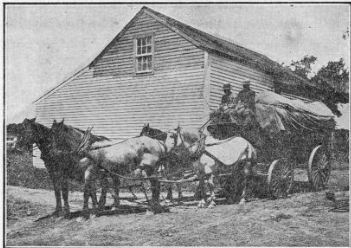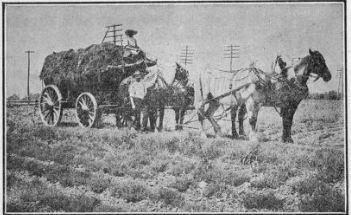84. Transportation Of Manures
Description
This section is from the book "Vegetable Gardening", by Ralph L. Watts. Also available from Amazon: Vegetable Gardening.
84. Transportation Of Manures
Barges are used extensively to carry manure to ports near commercial gardening centers. This is the cheapest method of transportation unless the gardener operates near enough to the stables to haul the manure direct by wagon or sled. Immense quantities are shipped by train. The business in New York and Philadelphia is handled by firms who collect the manure regularly and store, if necessary, until orders are received. Considerable water is used in the care of the manure in storage to control fire-fanging. This is also a simple method of selling water by the ton!

Fig. 8. Hauling Manure Near Boston.

Fig. 9. Hauling Manure Near Philadelphia.
The large, well-built wagons at Boston carry three to five tons. The one shown in Figure 8 cost $300 and it is kept busy the year round supplying a large market garden. Heavy canvas is used to cover the loads in hauling from the city to prevent the manure from being strewn along the streets and roads. Figure 9 shows a wagon typical of the ones used in Philadelphia County to haul manure from the railroad stations; it is loaded with four and one-half tons. In the smaller centers of production about two tons is the most common weight for a load. One-horse wagons carrying 1500 pounds or a ton are often used by market gardeners in making short hauls, and dump carts of about the same capacity are utilized to some extent.
Continue to:
Tags
plants, crops, gardening, cultivated, harvesting, food ,greenhouses, fertiliser, vegitables
